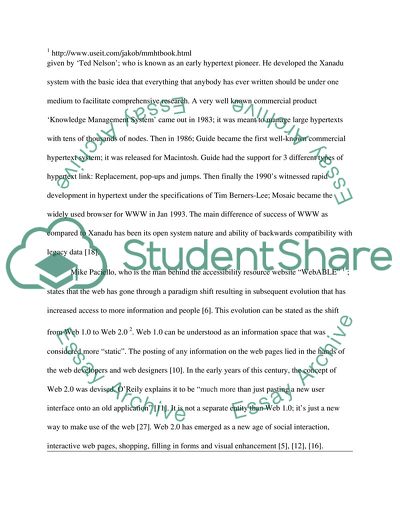Cite this document
(How Web 2.0 Supports the Accessibility for the Visual Impaired People Term Paper, n.d.)
How Web 2.0 Supports the Accessibility for the Visual Impaired People Term Paper. Retrieved from https://studentshare.org/information-technology/1731000-how-web-20-support-the-accessible-for-visual-impairments
How Web 2.0 Supports the Accessibility for the Visual Impaired People Term Paper. Retrieved from https://studentshare.org/information-technology/1731000-how-web-20-support-the-accessible-for-visual-impairments
(How Web 2.0 Supports the Accessibility for the Visual Impaired People Term Paper)
How Web 2.0 Supports the Accessibility for the Visual Impaired People Term Paper. https://studentshare.org/information-technology/1731000-how-web-20-support-the-accessible-for-visual-impairments.
How Web 2.0 Supports the Accessibility for the Visual Impaired People Term Paper. https://studentshare.org/information-technology/1731000-how-web-20-support-the-accessible-for-visual-impairments.
“How Web 2.0 Supports the Accessibility for the Visual Impaired People Term Paper”, n.d. https://studentshare.org/information-technology/1731000-how-web-20-support-the-accessible-for-visual-impairments.


